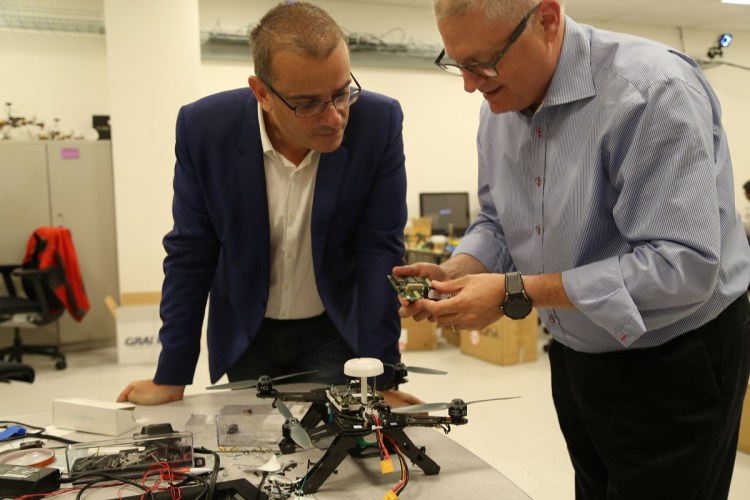Moving deeper into computer vision, Intel is acquiring Silicon Valley startup Movidius for an undisclosed price.
The deal will help Intel move into hot new markets with technology for drones, robots, virtual reality headsets, security cameras, and more. Intel said the move will also help it with deep learning solutions — from devices to the cloud.
“We’re entering an era where devices must be smart and connected,” said Intel senior vice president Josh Walden, in a blog post. “When a device is capable of understanding and responding to its environment, entirely new and unprecedented solutions present themselves.”
Remi El-Ouazzane, CEO of San Mateo, Calif.-based Movidius, said he was excited about the acquisition.
“Movidius’ mission is to give the power of sight to machines,” he said in a blog post. “As part of Intel, we’ll remain focused on this mission, but with the technology and resources to innovate faster and execute at scale. We will continue to operate with the same eagerness to invent and the same customer-focused attitude that we’re known for, and we will retain Movidius talent and the start-up mentality that we have demonstrated over the years.”
Movidius is working with customers like DJI, FLIR, Google, and Lenovo to give sight to smart devices, including drones, security cameras, AR/VR headsets, and more.
“When computers can see, they can become autonomous, and that’s just the beginning,” El-Ouazzane said. “We’re on the cusp of big breakthroughs in artificial intelligence. In the years ahead, we’ll see new types of autonomous machines with more advanced capabilities as we make progress on one of the most difficult challenges of A.I.: getting our devices not just to see, but also to think.”
To boost its RealSense 3D depth camera technology, Intel is acquiring critical technologies to help it be a leader in computer vision and “perceptual computing,” where sensing real-world objects is important. Movidius makes what it calls a vision processing unit (VPU).
“Simply put, computer vision enables machines to visually process and understand their surroundings,” Walden added. “Cameras serve as the ‘eyes’ of the device, the central processing unit is the ‘brain’, and a vision processor is the ‘visual cortex’. Upon integration, computer vision enables navigation and mapping, collision avoidance, tracking, object recognition, inspection analytics, and more – capabilities that are extremely compelling in emerging markets.”
Intel needs technology for recognizing objects, understanding scenes, authenticating, tracking, and navigating. Walden said that Movidius offers “massive potential” to accelerate Intel’s own plans.
“With Movidius, Intel gains low-power, high-performance system-on-chip (SoC) platforms for accelerating computer vision applications,” Walden said. “Additionally, this acquisition brings algorithms tuned for deep learning, depth processing, navigation and mapping, and natural interactions, as well as broad expertise in embedded computer vision and machine intelligence. Movidius’ technology optimizes, enhances, and brings RealSense capabilities to fruition.”
He added, “Computer vision will trigger a Cambrian Explosion of compute, with Intel at the forefront of this new wave of computing, enabled by RealSense, in conjunction with Movidius and our full suite of perceptual computing technologies.”
Movidius has focused on the device level, combining advanced algorithms with dedicated low-power hardware.
“At Intel, we’ll be part of a team that is attacking this challenge from the cloud, through the network, and on the device,” El-Ouazzane said. “This is very exciting.”


